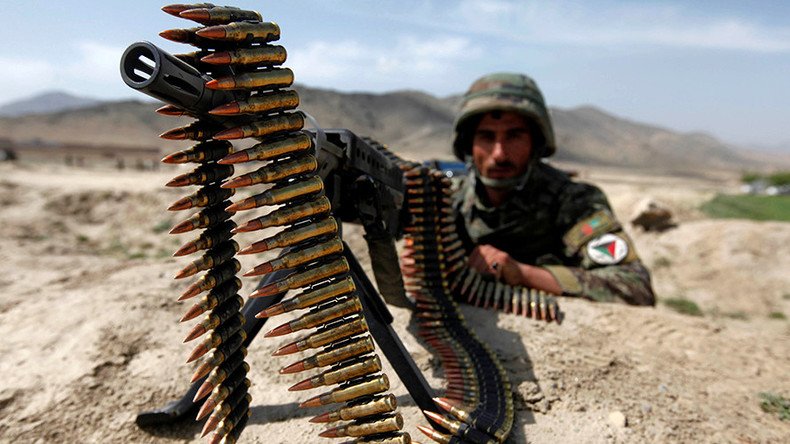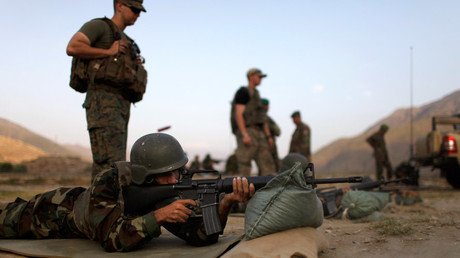US-trained Afghan forces keep losing territory to Taliban – US govt report

The NATO-trained Afghan military only controls about two-thirds of Afghanistan’s districts and keeps losing territory to the Taliban, despite billions of dollars in US investment and efforts to train a capable national army, an internal US report found.
Taliban and other militant groups continue to gain ground despite Washington halting the withdrawal of US troops from Afghanistan this year.
The NATO-backed Afghan government only controls or influences 65.6 percent of districts in the country as of May 28, 2016, down from the 70.5 percent it held in January this year.
This is according to a quarterly report by US Special Inspector General for Afghanistan Reconstruction (SIGAR) which oversees progress of a multi-billion program to train and equip the national military.
In the meantime, Taliban and other terrorist groups hold or influence 36 districts (8.8 percent of the territory) populated by roughly 2.5 million people, while another 104 districts (25.6 percent) were “at risk” of falling into militants’ hands.
The alarming report does not elaborate on militant-held areas of Afghanistan, but it mentions that by June 2016, the Pentagon had allocated over $68.4 billion “to build, equip, train, and sustain” Afghan national army and the police, together commonly known as Afghan National Security and Defense Forces (ANSDF).
However, the Afghan military suffer from “high attrition rates, including high casualty rates” as well as poor command and control, leadership, logistics and overall coordination “preventing the ANDSF from properly engaging the Taliban.”
The report claimed the increased insurgent control since January may be due to Afghan forces’ redeployment from lower-priority areas such as checkpoints to high-priority areas to “conduct offensive operations, gain and maintain the initiative, exploit opportunities, and consolidate tactical gains.”
READ MORE: US to leave 8,400 troops in Afghanistan into 2017, 35 percent more than expected
Army General John Nicholson, commander of US Forces in Afghanistan, told Reuters most of the Taliban-controlled areas are rural, meaning that the security situation in large cities, including the capital, is much better.
However, Afghanistan has seen spiraling violence in recent months. Last Saturday, 80 people were killed and 231 injured in a devastating suicide attack at the heart of Kabul, with Islamic State (IS, formerly ISIS/ISIL) claiming responsibility for the blast.
In late June, Taliban suicide bombers targeted buses carrying newly-graduated police cadets in the western part of Kabul, killing 27 and injuring around 40, according to Reuters.
Afghanistan remains fertile soil for Islamists, with Russia’s security agencies saying there are already thousands of IS militants ready to target neighboring countries.













